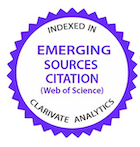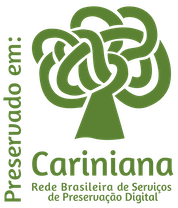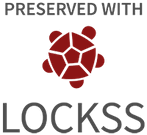Correlações entre contagem de células somáticas e parâmetros físico-químicos e microbiológicos de qualidade do leite
DOI:
https://doi.org/10.1590/1809-6891v15i420637Palavras-chave:
composição centesimal do leite, mastite, qualidade química do leite, qualidade higiênico-sanitária do leite, variáveis climáticas.Resumo
Objetivou-se avaliar as correlações entre contagem de células somáticas (CCS) e os constituintes do leite e verificar as associações das condições ambientais com a CCS. Os dados utilizados foram de 1.541 unidades produtoras de leite referentes a 15 municípios da bacia leiteira do Vale do Taquari, Rio Grande do Sul. Foram tabulados os dados de CCS, contagem bacteriana total (CBT) e composição centesimal do leite, referentes ao período de junho de 2008 a dezembro de 2011, totalizando 44.089 amostras analisadas. A temperatura ambiente apresentou correlação positiva e significativa com a CCS, enquanto a precipitação pluviométrica e a umidade relativa do ar, ausência de correlação. Os teores de gordura, proteína, minerais e sólidos totais foram diretamente correlacionados com a CCS, enquanto que os sólidos não gordurosos e a lactose apresentaram comportamento inverso. Através da análise de componentes principais (ACP), auxiliada pelo método hierárquico aglomerativo de agrupamento, os sete tratamentos presentes no estudo foram reduzidos a cinco grupos de acordo com a similaridade, permitindo constatar que amostras com CCS superiores a 400.000 até 750.000 céls mL-1, apresentam a mesma qualidade, não justificando a estratificação de intervalos nesta amplitude de variação.
PALAVRAS-CHAVE: composição centesimal do leite; mastite; qualidade química do leite; qualidade higiênico-sanitária do leite; variáveis climáticas.
Downloads
Publicado
Como Citar
Edição
Seção
Licença
Copyright (c) 2014 Ciência Animal Brasileira / Brazilian Animal Science

Este trabalho está licenciado sob uma licença Creative Commons Attribution 4.0 International License.
Autores que publicam nesta revista concordam com os seguintes termos:
- Autores mantém os direitos autorais e concedem à revista o direito de primeira publicação, com o trabalho simultaneamente licenciado sob a Licença Creative Commons Attribution que permite o compartilhamento do trabalho com reconhecimento da autoria e publicação inicial nesta revista.
- Autores têm autorização para assumir contratos adicionais separadamente, para distribuição não-exclusiva da versão do trabalho publicada nesta revista (ex.: publicar em repositório institucional ou como capítulo de livro), com reconhecimento de autoria e publicação inicial nesta revista.
- Autores têm permissão e são estimulados a publicar e distribuir seu trabalho online (ex.: em repositórios institucionais ou na sua página pessoal) a qualquer ponto antes ou durante o processo editorial, já que isso pode gerar alterações produtivas, bem como aumentar o impacto e a citação do trabalho publicado (Veja O Efeito do Acesso Livre).






























